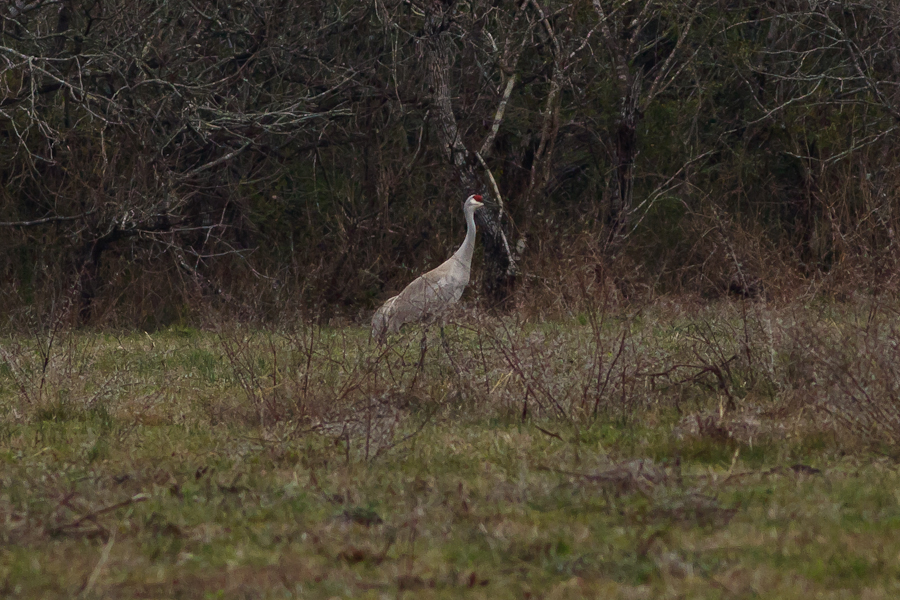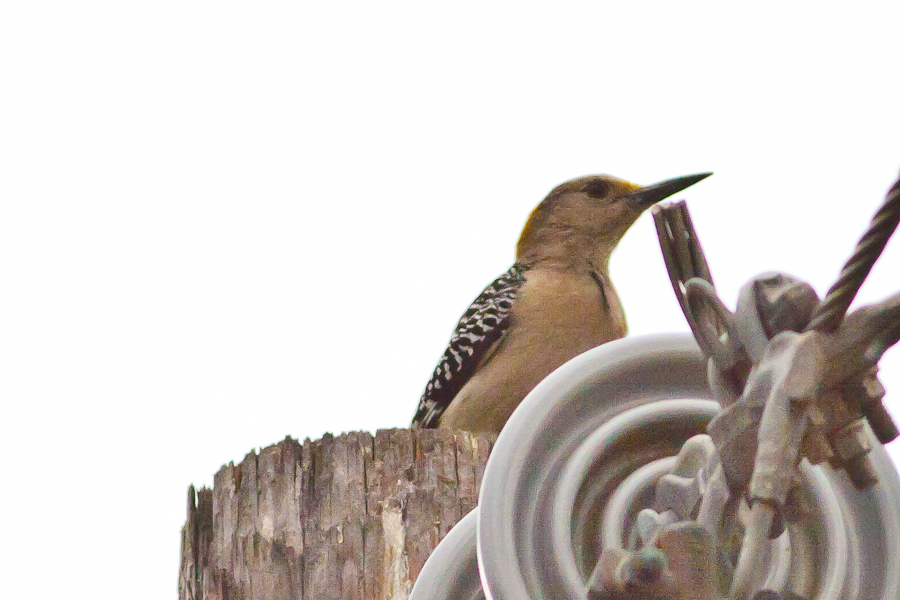#528-#530 in Corpus Christi
Sunday, February 27th, 2011Sunday I took an early morning photography class at Paradise Pond, and then left for the airport to catch 6:00 PM flight. Of course this left about eight hours to kill in between, and I planned to use it visiting some more inland hotspots. I mostly followed the route outlined in Cooksey and Weeks’ Birder’s Guide to the Texas Coast, starting from Oso Creek Park.
Oso Creek Park turned out to be too windy for birds on Sunday. It was pretty much a bust aside from a single Loggerhead Shrike. The next stop, Bill Witt City Park, did turn up a dozen or so Long-billed Curlews feeding on the ball fields, just as the guide promised. The South Texas Botanic Gardens were much more fun, and I spent a good couple of hours roaming the grounds. I only added one species to my Texas list there, Black-necked Stilt. Frustratingly I heard at least two possible life birds singing/calling very unfamiliar songs, but I couldn’t find them or ID them despite extensive searching. :-(
After the Botanic Gardens, I followed a route that took me to some unlikely local hotspots in industrial areas and small local parks. Among other birds, I added Least Sandpiper, Stilt Sandpiper, and American Avocet to the trip list.
However the real jewel was the final stop at a small park at the Hilltop Community Center. I don’t know why this is such a hot spot, but it was just popping with new and interesting birds. There were several I hadn’t found earlier on the trip including Ruby-crowned Kinglet and White-winged Dove. The area wasn’t that great–just about 30 acres–but the foliage was very dense with lots of cover, no open fields, so you had to walk all the trails. The first “lifer” I found was a surprised Javelina (Pecari tajacu), a local native wild pig. It ran off before I could get a good shot.
However the first life bird was a Couch’s Kingbird, a kind of flycatcher and one of my target species for the trip:

I may have seen one earlier at Lake Findley on the first day, but that one was too far away to be sure. This one was much more cooperative, and gave me plenty of time to shoot it from all angles, and carefully check the field marks against my Sibley Field Guide to make sure it wasn’t the very similar (but much rarer) Tropical Kingbird.
(more…)




